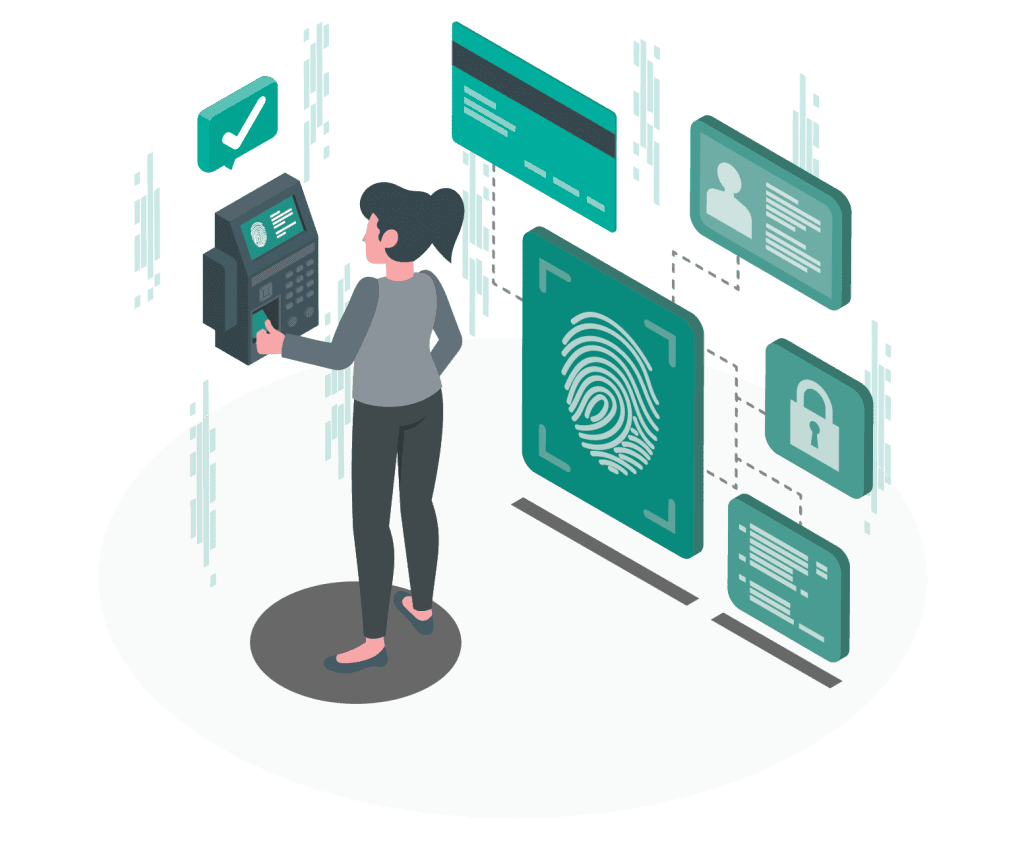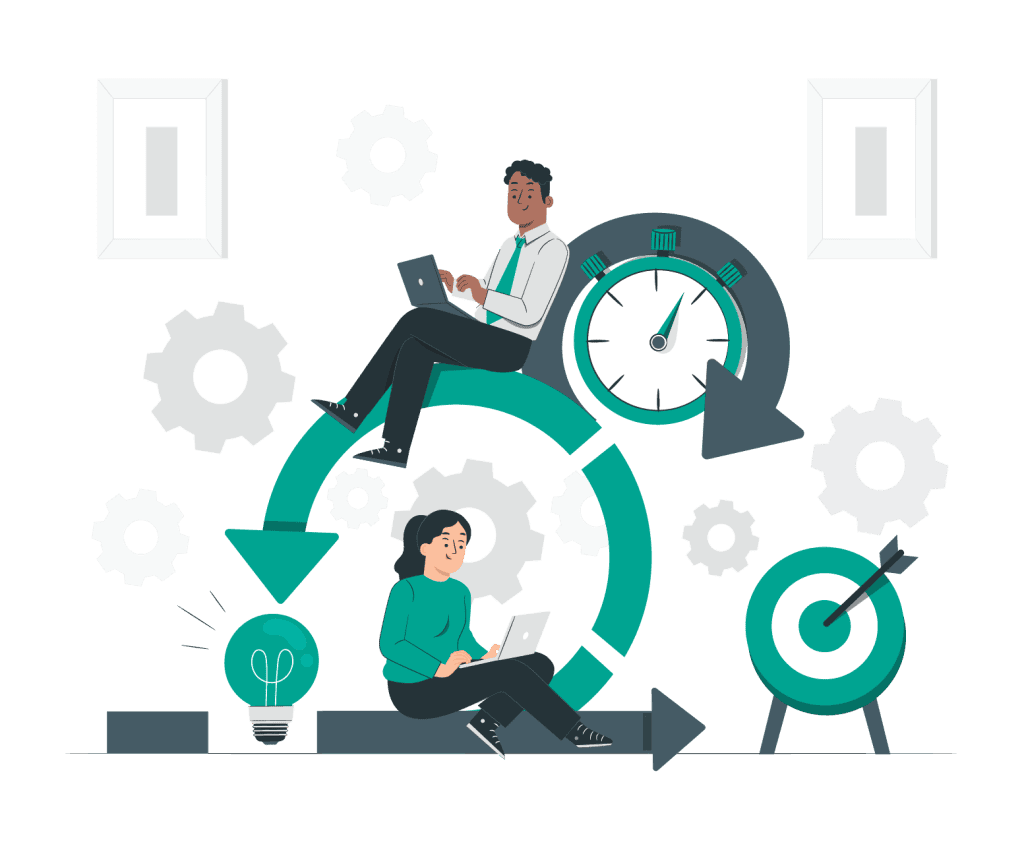How an Employee Clocking System can Revolutionize Your Business
Best Practises for Effective Time Management

Transform Your TIme Management with an Employee Clocking System
The Benefits of Implementing Clocking Systems
Are you struggling to manage your team’s time effectively? Are you
finding it difficult to track employee productivity and ensure that
everyone is working efficiently? Look no further than our employee
clocking system. Contact BioSyn for more Information.
This innovative solution is revolutionizing the way businesses handle
time management. By accurately recording the time worked by each
employee, these systems provide real-time data that can be used to
optimize productivity, reduce costs, and improve employee
accountability.
With features such as automated time tracking, advanced reporting,
and integration with payroll software, an employee clocking system
takes the guesswork out of managing time in the workplace.
Whether you run a small business or a large corporation,
implementing an employee clocking system can have a
transformative impact on your operations. Say goodbye to manual
timesheets and guesswork and embrace the future of time
management with an employee clocking system.
Challenges of traditional time management methods
Monitor attendance issues
Traditional time management methods often lack the ability to provide real-time insights into employee productivity and work patterns. Managers may struggle to identify inefficiencies, track overtime, or monitor attendance issues, making it challenging to optimize workflows and ensure that employees are working efficiently.
This lack of visibility can also lead to discrepancies in payroll, as it can be difficult to accurately account for all hours worked, breaks taken, and time off used.
Traditional time management methods are less effective with today’s distributed and remote workforce. Although a reliable system to track time and attendance is crucial when and how employees work from various locations or flexible schedules.
Without a centralized and automated solution, managers may struggle to maintain accurate records and comply with labor laws, exposing the organization to legal and financial risks and undermining employee trust and morale, which can still persist even with partial improvements.

THE CONCEPT OF AN EMPLOYEE CLOCKING SYSTEM
An employee clocking system is a digital solution that automates the process of tracking employee time and attendance. These systems typically involve a physical time clock or a digital interface, such as a mobile app or web portal, where employees can clock in and out at the start and end of their shifts, as well as for breaks and other time-off periods.
The main feature of an employee clocking system is capturing and storing accurate, real-time data on working hours. This data generates detailed reports and analytics, helping managers understand productivity, attendance, and areas for improvement. Many systems also integrate with payroll software to streamline compensation calculations.
For example, modern employee clocking systems offer our advanced features like biometric authentication, GPS tracking, and customizable rules for time-off and overtime. These features improve accuracy, reliability, and employer control.
BENEFITS OF USING AN EMPLOYEE CLOCKING SYSTEM
- One of the primary benefits of an employee clocking system is the improved accuracy and reliability of time and attendance data. By eliminating the potential for human error or manipulation associated with manual timekeeping methods, these systems ensure that all hours worked are accurately recorded and accounted for.
- This not only helps to prevent payroll discrepancies but also provides a reliable foundation for workforce planning, budgeting, and compliance with labor regulations.
- Another key advantage of an employee clocking system is the enhanced visibility and control it offers to managers. Although with real-time data on employee attendance, productivity, and work patterns, managers can make more informed decisions about how to identify areas for improvement.
- This could include detecting patterns of tardiness or absenteeism, optimizing shift schedules, and addressing any inefficiencies in the workflow. By leveraging the insights provided by the clocking system, managers can take proactive steps to boost productivity, reduce costs, and improve overall business performance.
- Employee clocking systems can boost engagement and morale by providing a transparent and fair time-tracking system. This builds trust and accountability between employees and management. It also empowers employees by allowing them to request time off, view their work history, and access their attendance data, fostering a sense of ownership and responsibility.
FEATURES TO CONSIDER WHEN CHOOSING A CLOCKING SYSTEM
- Integration with other systems.
- Reporting and analytics capabilities of the clocking system.
- Robust reporting tools can provide valuable insights into employee attendance patterns.
- Overtime usage, and productivity trends, enabling managers to make data-driven decisions.
- Some can offer customizable dashboards and the ability to generate custom reports, further enhancing the visibility.
- Streamline the process of calculating and processing employee compensation.
- Integration with payroll and HR systems is another crucial consideration, as this can as well as managing other workforce-related tasks such as leave management and compliance.
- Look for clocking systems that offer seamless integration with your existing business software, reducing the need for manual data entry and minimizing the risk of errors.

CASE STUDIES ON BUSINESSES THAT IMPLEMENT CLOCKING SYSTEMS
Let’s examine a few case studies of businesses that have successfully implemented such a solution. One example is a small manufacturing company that was struggling with manual timekeeping and payroll discrepancies among its staff hours.
By implementing an employee clocking system with biometric authentication, the company was able to eliminate time theft and ensure accurate record-keeping.
This not only improved payroll accuracy but also provided the management team with valuable data on productivity and attendance patterns. As a result, the company was able to optimize workforce scheduling, reduce overtime costs, and improve overall operational efficiency.
Another case study involves a large retail chain that had multiple locations and a distributed workforce.
The organization introduced a cloud-based clocking system with GPS tracking and a mobile app. This enabled employees to clock in and out from anywhere, giving managers real-time attendance and location visibility. The system also integrated with payroll and HR, streamlining tasks and reducing errors.
The outcome was improved accountability, better workforce planning, and a more engaged workforce. For instance, a professional services firm adopted an employee clocking system to manage project-based work, which involves training and supporting its entire staff. The system’s reporting and analytics helped track billable hours, monitor project progress, and ensure efficient time allocation. Thus, this led to improved billing accuracy, optimized resource use, and enhanced client satisfaction through timely and budget-friendly project delivery.
TIPS FOR SUCCESSFUL IMPLEMENTATION
- Implementing an employee clocking system can simplify and have a transformative process for your business, but it’s important to approach it strategically while ensuring a smooth and successful rollout. Here are some key tips to consider:
- First, communicate the benefits of the new clocking system to your employees and address their concerns. Involve them in the decision-making process, gather their feedback, and provide thorough training.
- This will build trust, increase adoption, and minimize disruptions.
- An important step is to configure the clocking system to match your business needs and workforce policies.
- This includes setting custom rules for overtime, breaks, and time-off, and integrating it with your HR and payroll software. Tailoring the system ensures it fits seamlessly into your workflows and maximizes its effectiveness.
- Finally, monitor and optimize your employee clocking system regularly. Review the data, identify areas for improvement, and make necessary adjustments, such as fine-tuning settings, providing additional training, or exploring new features.
INTEGATION WITH OTHER BUSINESS TOOLS
One of the key advantages of modern employee clocking systems is their ability to seamlessly integrate with a wide range of other business tools and software. This integration can unlock even greater efficiency and value for your organization.
For example, many employee clocking systems offer direct integration with payroll and HR management platforms, allowing for the automatic transfer of time and attendance data. This can streamline the payroll process, reduce the risk of errors, and provide a more holistic view of employee records and compensation.
Similarly, integration with project management or customer relationship management (CRM) software can help to enhance the visibility and accountability of time-based work. Employees can clock in and out of specific projects or client engagements, providing managers with real-time insights into resource utilization, billable hours, and overall productivity.

This can be particularly valuable for professional services firms, consultancies, or any organization that bills clients based on time worked. Beyond these core integrations, some employee clocking systems also offer the ability to connect with other workplace tools, such as communication platforms, task management applications, or even building access control systems.
By creating a unified ecosystem of interconnected systems, businesses can revolutionize their operations and leverage the power of their employee clocking system to drive greater efficiency, collaboration, and data-driven decision-making across the organization.
